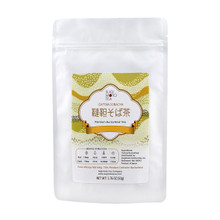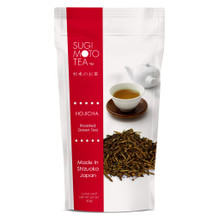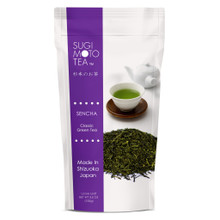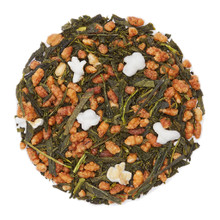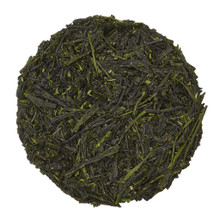Japanese Oolong Tea
You might be familiar with oolong tea, a tea usually associated with China, and wonder why a Japanese tea company offers it. Although oolong is made with a different process than the teas usually made in Japan, it is manufactured here. Japanese Oolong is rare, however, produced by only a handful of farmers who know the way to make the best-tasting version of this tea.
How is Oolong Different from Other Japanese Tea?
Sencha is a steamed tea. It goes through the “kill-green” process shortly after being harvested, which halts the oxidative enzymes and keeps the leaves green, bringing out the more umami flavors in the leaves. That’s why it’s known as a “green tea,” although sencha isn’t the only green tea. Teas such as genmaicha and kukicha are also green teas, as are most of the popular tea varieties produced in Japan.
On the other hand, oolong tea leaves are first dried out in a process known as withering or wilting. This process is when tea is left out under the sun or overnight in a cool, breezy room for 8 to 14 hours. Then the leaves are allowed to oxidize, giving them a darker appearance between the bright green of teas like sencha and the dark black or brown of the black teas you might be more familiar with. A farmer must carefully monitor and know when to stop the oxidation process for oolong teas and start the kill-green process to keep the leaves from becoming black tea.
Where is Japanese Oolong Grown?
Sugimoto’s Japanese Oolong is grown at Deai Nouen, neighbors of the Sugimoto Tea Company headquarters in Shimada, Shizuoka. Over the years we have developed a strong professional relationship with Deai Nouen, as well as a personal friendship with the farmer who grows Deai Nouen’s tea. We are thrilled to be able to offer Japanese Oolong grown by our good friends.
It was grown by farmer Jun Watanabe and is a masterful blend of six different cultivars from the spring harvest. It has a floral and subtly sweet aroma, reminiscent of a high-mountain Taiwanese Oolong. The mouthfeel is buttery and accompanied by a light Jasmine taste with a hint of apricot.
Started in 1921, Deai Nouen has over a century of experience in tea cultivation. The farm is located near the Ojiro River in the semi-mountainous area of Shimada and is blessed with several geographic features that make it perfectly situated for growing tea. For example, having the Ojiro River nearby creates air currents and fog, which bring moisture to the farm and help keep the humidity at the perfect level for growing tea.
Deai Nouen works hard to continue furthering the art of tea cultivation and open doors of possibility when it comes to tea. They pride themselves in their ability to utilize traditional farming techniques while still testing new farming methods and continuing research into all things tea.
How is Japanese Oolong Produced?
When it comes to the production of oolong, Deai Nouen says the most important step is withering. Complications during this process will result in the tea tasting and smelling almost the same as a green tea rather than an oolong.
Traditionally in the withering process tea leaves are spread out across a surface and left out for several hours to dry. At Deai Nouen, however, oolong is processed in a modern drum-type withering machine. This allows them to easily control the temperature and humidity of the environment, meaning they get the desired result every time. Every cultivar is unique, meaning that the degree of withering necessary for optimal taste varies.
This makes the selection of cultivars a careful process. If a cultivar’s fragrance releases easily, it requires a more gentle withering process. The opposite applies to cultivars that need a push to develop strong aroma. True artistry comes from the blending of different cultivars together to bring out deeper and more complex fragrances. This is where Deai Nouen truly shines, as they carefully consider which cultivars work best together to produce the most delicious tea.
Overall, the production of oolong involves the repetition of various processes to make sure tea leaves achieve the desired amount of withering and oxidation. The Japanese Oolong we offer has a lightly Jasmine taste with a hint of apricot, achieved through the careful monitoring of this process. We hope that learning about this tea has made you want to expand your tea horizons and explore varieties you might not have known existed.















